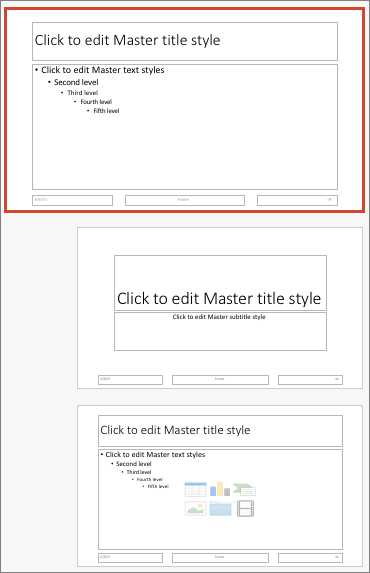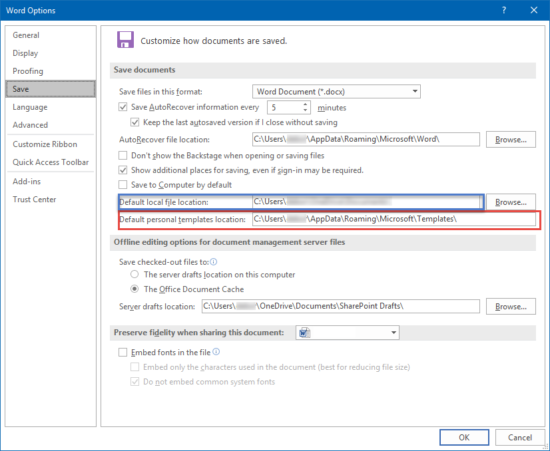Office 2016 Mac Template Location
Although an occasional sacrifice to the Office gods may make your networking life a bit easier, a template isn’t a place of worship. Rather, a template is a special type of document file that holds formatting information, boilerplate text, and other customized settings that you can use as the basis for new documents.
Three Office programs — Word, Excel, and PowerPoint — enable you to specify a template whenever you create a new document. When you create a new document in Word, Excel, or PowerPoint by choosing File → New, you see a dialog box that lets you choose a template for the new document.


Office comes with a set of templates for the most common types of documents. These templates are grouped under the various tabs that appear across the top of the New dialog box.
- C: Users UserName Documents Custom Office Templates. It may also be a completely different location since it can be set by the user in the backstage under File / Options / Save as shown below (for PowerPoint 2016) How users can set the default template. Setting the default template requires two things: The right file name: default.potx.
- Then go into your Templates folder and delete the old Normal.dotm file Do this by: In Finder click 'Go' at the top and then click on Computer; Double-Click on Macintosh HD; Double-click 'Library' In the upper-right search window, type 'Templates' Double-click the file named 'Templates' You will see two templates - Delete the old Normal.dotm file.
In addition to the templates that come with Office, you can create your own templates in Word, Excel, and PowerPoint. Creating your own templates is especially useful if you want to establish a consistent look for documents prepared by your network users. For example, you can create a Letter template that includes your company’s letterhead or a Proposal template that includes a company logo.
Office enables you to store templates in two locations. Where you put them depends on what you want to do with them:
To deploy Office 2016, the following tasks must be performed and conditions must be met: Unpack or copy the contents of the Office 2016 ISO (or other image format) to a location on your PDQ Deploy console’s machine or on a network share. The unpacked contents must contain the setup.exe Office setup executable file.
- The User Templates folder on each user’s local disk drive: If a particular user needs a specialized template, put it here.
- The Workgroup Templates folder on a shared network drive: If you have templates that you want to make available to all network users on the network server, put them here. This arrangement still allows each user to create templates that aren’t available to other network users.
When you use both a User Templates folder and a Workgroup Templates folder, Office combines the templates from both folders and lists them in alphabetical order in the New dialog box. For example, the User Templates folder may contain templates named Blank Document and web Page, and the Workgroup Templates folder may contain a template named Company Letterhead. In this case, three templates appear in the New dialog box, in this order: Blank Document, Company Letterhead, and web Page.
Office 2016 Mac Key
To set the location of the User Templates and Workgroup Templates folders, follow these steps in Microsoft Word:
- Click the Office button and then click Word Options. The Word Options dialog box opens.
- Click the Advanced tab. The Advanced options appear.
- Scroll down to the General section and then click the File Locations button. The File Locations dialog box appears.
- Double-click the Workgroup Templates item. This step opens a dialog box that lets you browse to the location of your template files.
- Browse to the template files and then click OK. You return to the File Locations dialog box.
- lick OK to dismiss the File Locations dialog box. You return to the Word Options dialog box.
- Click OK again. The Word Options dialog box is dismissed.
Although the User Templates and Workgroup Templates settings affect Word, Excel, and PowerPoint, you can change these settings only from Word. The Options dialog boxes in Excel and PowerPoint don’t show the User Templates or Workgroup Templates options.


Office 2016 Mac
When you install Office, the standard templates that come with Office are copied into a folder on the computer’s local disk drive, and the User Templates option is set to this folder. The Workgroup Templates option is left blank. You can set the Workgroup Templates folder to a shared network folder by clicking Network Templates, clicking the Modify button, and specifying a shared network folder that contains your workgroup templates.